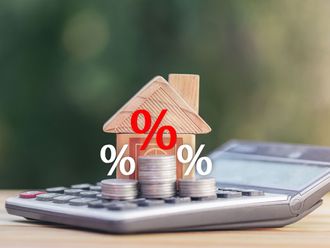
Dubai: In a surprise move, India's central bank has decided to stick to the 'no rate cut' policy even though markets and investors had been factoring in a 0.50% trim. This is the 11th straight time the RBI (Reserve Bank of India) has decided to retain India's repo rate - or short-term lending rate - at 6.5%.
The move comes at a time when the Indian rupee is trending at near all-time lows of 23.02/23.03 against the dirham. Early this month, the rupee was trading at 23.06.
"The rupee had in fact gained a little yesterday as the overwhelming market expectation was that the RBI would cut rates after holding it level for 10 successive meetings," said an FX analyst. "if the cut had happened, it could have had a stabilising effect on the rupee for the short-term."
Indian expats in the UAE and Gulf have benefitted from the dirham-rupee levels, with late November and early December seeing higher than average remittance levels.
"Currently, the INR to the $ is at 84.7 levels, with the INR depreciating by around 2.5% so far in 2024," said Neelesh Gopalan, FX Analyst at a Dubai-based fintech. "We anticipate the $-INR may reach 85 level by Q2-2025, based on current trends and economic projections."

We anticipate $-INR may reach 85 level by Q2-2025, based on current trends and economic projections.
Why did RBI not cut rates?
The Indian economy's growth has been showing signs of slowing down, while inflation has not seen much of an easing.
"The MPC (Monetary Policy Committee) took note of the recent slowdown in the growth momentum," said Shaktikanta Das, the RBI Governor, in explaining the no cut stance.
This 'translates into a downward revision in the growth forecast for the current year going forward into the second-half of this year and the next year', he addeed. It meant that the 'MPC assessed the growth outlook to be resilient, but warranting close monitoring'.
What RBI did cut was the Cash Reserve Ratio (CRR) to 4% from 4.5%, which would free up more funds flowing through India's banking sector and onward onto their clients. This could spark some higher growth possibilities, and which the India economy could do with right now. (The CRR is the minimum percentage of customer deposits that banks should hold as reserves. A lower CRR means more funds to provide as loans, etc.)

Foreign portfolio net outflows in India stocks totaled Rs2,161.2 million in November compared to Rs9,401.7 million during October. This month, up to December 5, it’s turned positive with net inflows of Rs1,496.4 million
Krishnan Ramachandran is CEO of Barjeel Geojit Financial Services. He says that the RBI no cut decision on base rate didn't come as a surprise. "A potential interest rate cut could lead to a further depreciation of the Indian rupee," he said. "Lower interest rates typically reduce the returns on investments making them less attractive to foreign investors and potentially leading to capital outflows. Several factors have contributed to the recent depreciation of the INR:
- Economic growth concerns;
- Global economic conditions;
- Geopolitical tensions; and
- Foreign portfolio outflows
Response to the RBI decision has been muted on India's key stock markets, with the Sensex up 0.09% and the Nifty 50 by 0.06% by 10:45 India time.
"The RBI's 50 bps CRR cut injects liquidity into the banking system, boosting credit availability and potentially supporting economic activity," said Milan Vaishnav, founder and Technical Analyst, ChartWizard.ae.
"The unchanged lending rate suggests a balanced approach amid inflation concerns and slowing growth. Despite a strong USD, a resilient INR can help cushion imported inflation - but it does limit export competitiveness. The upside in USD-INR may be capped at 85 due to intervention risks and relative stability.
"The downward GDP revision may dampen sentiment, but liquidity support could aid financials and rate-sensitive sectors. However, stock market gains may remain modest as investors digest mixed signals from monetary easing and economic headwinds."
Rate status quo and India's home sales
Home sales have dropped in recent weeks, which could do with the fact that average housing prices are up a cumulative 23% in the Top 7 Indian cities over the third quarter. Average prices in these markets collectively rose to about Rs8,390 per square foot by end of Q3-2024 from Rs6,800.
"The unchanged home loan rates support demand," said Anuj Puri, Chairman of Anarock, the property consultancy. "Given that sales were tapering in the last two quarters, developers too have been cautious about hiking prices lately.
"In this scenario, it makes sense for homebuyers to press the 'buy' button as the overall cost of acquisition of a property will remain relatively affordable."












